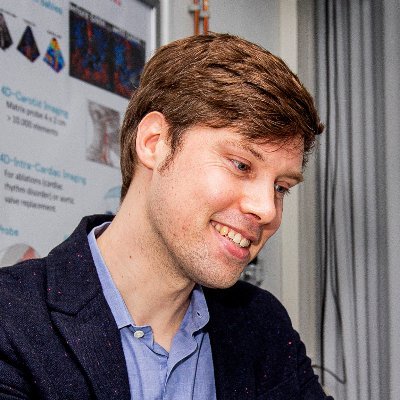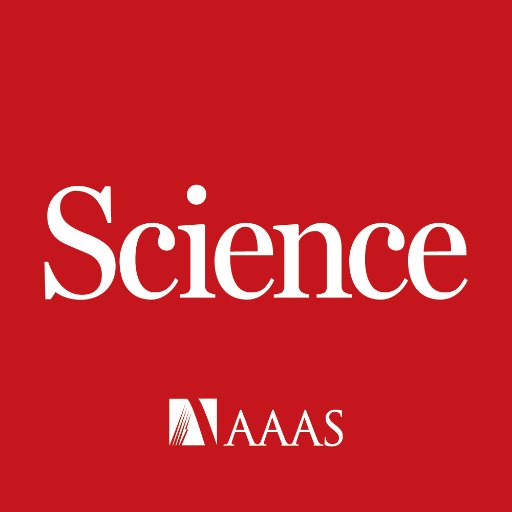
David Maresca
@DMarescalab
Followers
395
Following
136
Media
2
Statuses
114
Associate Professor at TU Delft. Imaging Physics, Biomolecular Ultrasound & Neuroscience.
Delft
Joined March 2021
Sound-sheet microscopy is born! Congratulations to Baptiste Heiles, lab members and collaborators at the Shapiro Lab (Caltech) and Gazzola Lab (NIN/KNAW) for this scientific achievement 🚀.
A new method reported in Science allows the generation of 3D ultrasound images of gene expression and 2D ultrasound images of capillary vessels. The approach enables fast, deep, and volumetric imaging of living opaque organs labeled with echogenic reporters. Learn more in this
5
10
64
RT @cziscience: Light microscopes hit a wall with opaque tissue. This new ultrasound modality developed by David Maresca + teams at TU Delf….
science.org
Light-sheet fluorescence microscopy has revolutionized biology by visualizing dynamic cellular processes in three dimensions. However, light scattering in thick tissue and photobleaching of fluores...
0
4
0
RT @georgeluPhD: #gasvesicles as reporter genes can impose cellular burden. Inspired by how their shell protein and assembly factors are se….
0
2
0
RT @ieee_ius: 📢 IEEE IUS 2025: David Maresca and Mikhail Shapiro will present a short course on "Biomolecular Ultrasound Imaging"—don’t mis….
0
1
0
RT @mikhailshapiro: A big step forward for biomolecular ultrasound! 🔊.Congrats @bgheiles, @DMarescalab at @tudelft and collaborators! #gasv….
0
19
0
RT @maayanvisuals: The Maresca Lab @tudelft are using ultrasound to show capillaries and cells in living organs!! I was thrilled to work on….
0
1
0
RT @mikhailshapiro: Fun to stop by Amsterdam for a daytime beer sip celebrating Prof. @DMarescalab's tenure promotion at @tudelft! 🍻 https:….
0
1
0
RT @ChenUltrasound: With the mission to lower the threshold for the adoption of biomolecular ultrasound in the ultrasound community, @DMare….
0
5
0
RT @Abdelfattah_Lab: Online now on biorxiv: our new voltage indicator engineered for red 2P optical recordings, 2Photron. Only possible tha….
biorxiv.org
Genetically encoded voltage indicators (GEVIs) allow optical recording of membrane potential from targeted cells in vivo . However, red GEVIs that are compatible with two-photon microscopy and that...
0
32
0
RT @mikhailshapiro: What happens when you can take videos of acoustic proteins in 3D inside the body? 🧊 You can see things like the flow of….
0
37
0
RT @PhysMedParis: A deep dive into brain imaging, illustrated by the amazing artist @Vaskange, with whom we share the same passion for infi….
0
7
0
RT @TNWTUDelft: 🔬PhD Candidate Rick Waasdorp is looking for ways to correct the distortion caused by the skull when using #Ultrasound techn….
0
1
0
RT @TheMartinsLab: There you go, our research with a glamour shot? Time to let science strike a pose! 🙃🤗 @angew_chem @AvHStiftung @CoE_iFIT….
0
2
0
RT @TudorIo1: Super-happy to see our paper harnessing multimodal in vivo imaging to look into the intricacies of nigrostriatal signalling b….
science.org
Optogenetic functional PET sheds light on molecular mechanisms of fMRI neuronal activity.
0
5
0
Congrats to Agis Matalliotakis for this important contribution to contrast-enhanced ultrasound imaging!.
journals.aps.org
The field of contrast-enhanced ultrasound (CEUS) combines nonlinearly oscillating microbubbles (MBs) with dedicated pulse sequences to reveal the vascular function of organs. Clinical ultrasound...
0
0
1
RT @voigtvision: Long awaited (thanks @JamesDManton for posting the patent application!) and now out in @ScienceMagazine: Using absorption….
0
48
0
RT @TanterM: Congrats Beatrice and so highly deserved ! A great project pushing the boundaries of breast cancer diagnosis in Ultrasound !.
0
1
0
RT @rungtalab: Happy to share our recent work on the spatial relationship between neuronal and vascular activity. Published today in @Natur….
0
46
0
Imaging organs at capillary scale.
3/3 Contrary to the linear approaches (SSM), NSSM has improved sensitivity to slow flows thanks to tissue filtering based on nonlinear response. NSSM combined with synthetic contrast agents can image flow in the capillary system in the rat brain with improved resolution!
0
0
2





